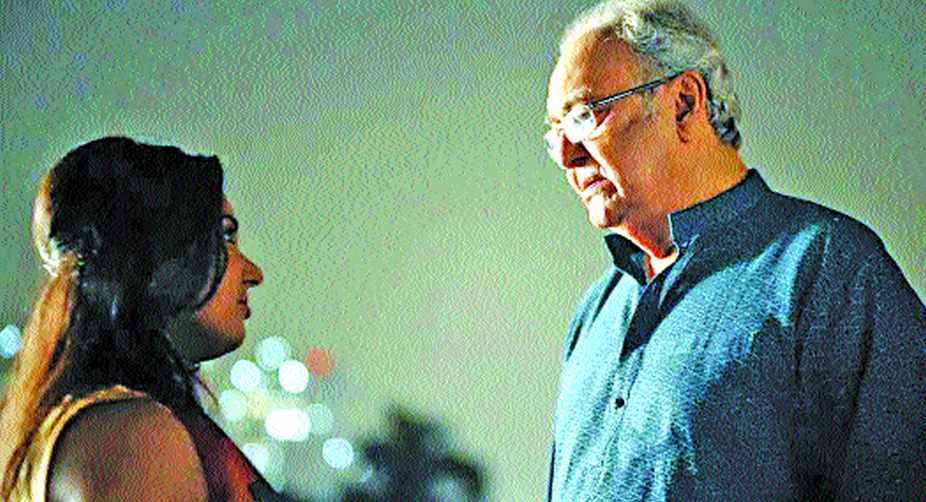Digital technology helped connect and cope in Covid: PM Modi
"India's universal and unique biometric digital identity system - Aadhar - helped provide timely financial support to the poor"
There are several first-timers like Sengupta who have impressed foreign audiences to an extent where they get funding for their next work.

With the explosion of digital technology, the production of shorts, documentaries and feature films has taken a quantum leap. On the one hand, seniors who had earlier believed that nothing could replace the magic of celluloid have had to adjust to the new climate. On the other hand, a generation of debut filmmakers has emerged with radical ideas in both content and treatment. But the question survives as to how many can survive the uncertainties of filmmaking. The early years involve a grim struggle unless there are exceptions like Aditya Bikram Sengupta, who stormed into the mainstream with Asha Jaowar Majhe. The real inspiration that a debutant derives from such a response is that the film not only appeals to a home audience but hits circuits all over the world through countless festivals that provide a platform for small films.
The global market opens new windows in terms of commercial support. There are several first-timers like Sengupta who have impressed foreign audiences to an extent where they get funding for their next work. Several festivals have what is called a pitching session where producers listen to ideas and scriptswith keen interest.
It gives aspiring filmmakers a chance to sell their ideas. Even otherwise, there are openings for shorts and documentaries that never existed before. The Kolkata Film Festival is getting bigger with the presence of Bollywood icons and foreign visitors. It now provides an opening for beginners with the added incentive of handsome prizes — an opportunity that many have grabbed.
Advertisement
Predictably, much of what is received is amateurish. At the same time, there are bright spots with the clear prospect of at least some of the newcomers striking firm roots. All this became evident when there was a strong Indian contribution to the 14th Kalpanirjhar International Short Fiction Festival, which has a permanent venue and a fixed date in Kolkata — 1 November at the Max Mueller Bhavan. It is perhaps the only festival of its kind in India and survives on the support it has been getting from the Goethe Institute and Caring Minds. But the fact that it has been around for 14 years confirms the enthusiasm it has generated and is here to stay.
There are countless young people who have acquired a passion for cinema and have discovered that a bit of resourcefulness added to the passion can result in films with a running time of anything between three and 30 minutes. Even a short film with an interesting idea or story can pave the way for a bigger future.
Essentially, however, the festival has an academic interest and uniqueness that find audiences thronging to see more than 100 films from nearly 30 countries.
What distinguishes Kalpanirjhar is the opportunity to be updated on the global scenario for short fiction films. The format is a test is more ways than one — the ability to tell a story with precision and purpose and to work meaningfully within a limited time-frame. It is a form that has developed with exciting results in Europe and has now come to India through predominantly independent channels. There is an inspiring sense of freedom and freshness that is an integral part of short fiction films. France was the country focus while the selections from Berlinale and Capalbio revealed the lively spirit in which these shorts are made. The tone ranges from comic insights into life to more serious issues. M Seeks F, for instance, is a 12-minute investigation of a creative crisis during which a painter needs to find his muse. This contrasts sharply with the hilarious portrait of a disjointed world in a series of films that Pierre Etaix made more than 50 years ago.
Particularly enjoyable was Happy Anniversary, where the great occasion for the couple is cruelly, but hilariously, killed by a traffic jam. The actor-director needs no language for the gags that are pulled off with an extraordinary sense of timing and inevitability.
Much the same impression survives in the packages received from Berlinale and Capalbio. There are small stories of human interest as well as animation films that offer telling comments on human conduct. But the most interesting takeaway from the festival is the contribution from young Indian debutants. Here we find a virtual explosion of offbeat ideas that can only be expressed in the short fiction format.
Prantik Basu’s Sokhisona was adjudged the best entry this year. But there were quite a number that revealed exciting prospects. A Silly Game makes a telling comment on how the seeds of violence are sown in the minds of children. Hundred Rupees talks about the deep-rooted menace of corruption in a compact
nine-minute capsule, while a 12-minute film sheds light on how IT will control human life 13 years from now.
Interestingly, Soumitra Chatterjee, after his experience of Ahalya, returns to the same format in The Lone Traveller, where he plays a veteran actor and playwright sustaining a zest for life. Fortunately, many of these films will be seen in the Kolkata Film Festival as well. But the most inspiring aspect of Kalpanirjhar is the discovery of those with genuine talent who stand out in the crowd.
By Swapan Mullick
Advertisement